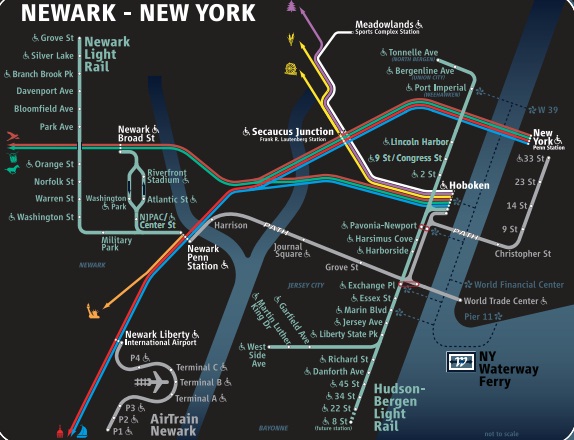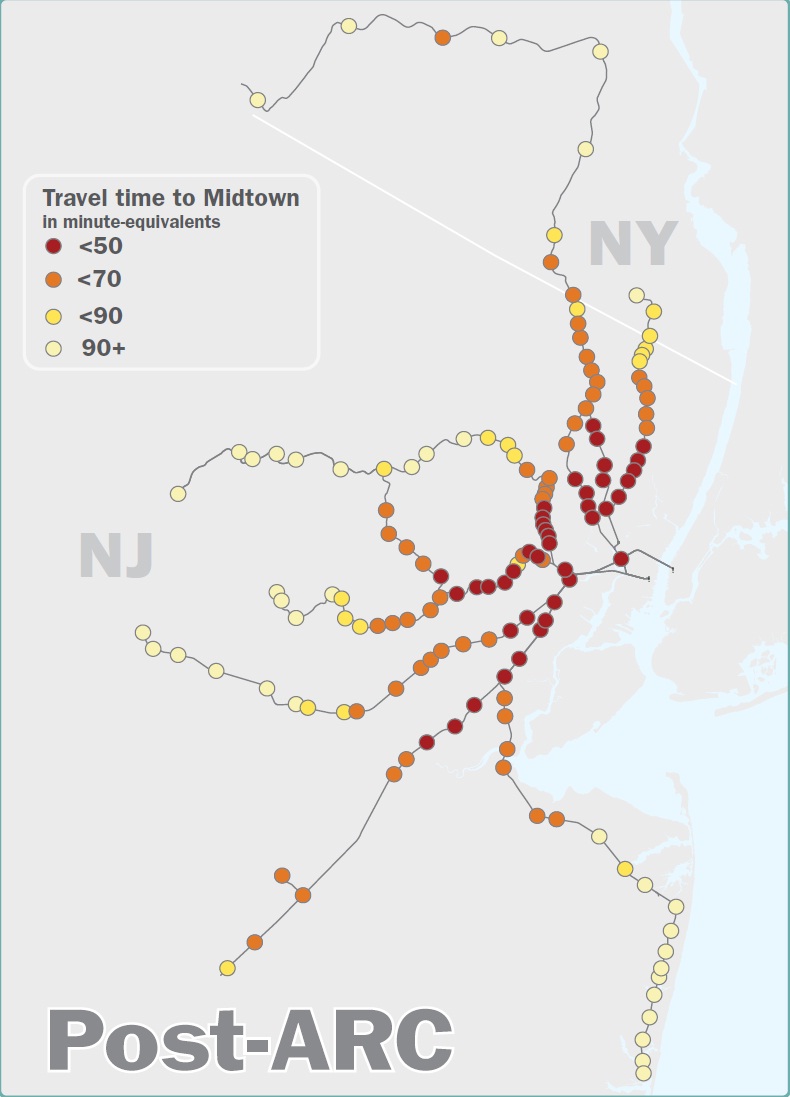New Jersey Future Blog
Insights from Review of “The Ethics of Metropolitan Growth”
January 5th, 2011 by Tim Evans
 Earlier this week the Sustainable Cities Collective blog featured a review by Daniel Nairn of a new book, Ethics of Metropolitan Growth: The Future of our Built Environment, by Robert Kirkland. The review is insightful and worth reading in full (as is presumably the book as well, if the review’s highlights are any indication), but it contains a few points that are particularly relevant to New Jersey Future and its mission.
Earlier this week the Sustainable Cities Collective blog featured a review by Daniel Nairn of a new book, Ethics of Metropolitan Growth: The Future of our Built Environment, by Robert Kirkland. The review is insightful and worth reading in full (as is presumably the book as well, if the review’s highlights are any indication), but it contains a few points that are particularly relevant to New Jersey Future and its mission.
The first is in reaction to the book’s inclusion of “mobility” on a list of factors for evaluating a place’s well-being. Nairn comments:
…I can’t pass up griping about including mobility as basic to well-being. Most of us value getting to the place we want to go (accessibility), not just moving from one place to another (mobility). Achieving access usually includes mobility, but it also includes proximity, or not having to move very far to get to where you want to go. Although this seems like splitting hairs, setting access as the ultimate goal of a transportation system completely changes how performance is measured and projects are selected.
In other words, there is more than one way to enable people to get from one destination to another; you can focus purely on how quickly people can travel among destinations (mobility), or you can reduce the amount of travel required to reach those destinations by putting them closer together (accessibility).
Pursuing the mobility goal usually leads to discussions of congestion relief and road widenings. But the smart-growth approach uses several strategies that reduce the need for people to travel in the first place:
- Increased density puts destinations closer together, which facilitates walking, biking, and shorter car trips
- Mixed-use development puts different types of destinations (residential, retail, office) near each other, to increase the range of trips that can be shortened by higher density
- Connectivity of street and pedestrian networks (more through-streets and fewer cul-de-sacs, a grid-like street design that creates multiple route options, pedestrian paths rather than walls and fences) ensures that physical proximity actually translates into short trips
- Transit-oriented development (TOD) puts homes and jobs near transit stations, creating a non-driving option for longer trips
The distinction between mobility and accessibility is an important one, and Nairn is right to call attention to it.
Another important point relates to the lack of effective regional governing bodies in America. On this score, New Jersey is well ahead of the rest of the country, with its regional entities overseeing the Pinelands, Meadowlands, and Highlands. But even these agencies have relatively circumscribed missions (mainly focused on environmental concerns) and cover only a fraction of New Jersey’s total population.
The book argues that “…there is often a mismatch between the scale of problems and the scale of government authority with the power to address them.” Picking up on this theme, Nairn observes:
This leads him to point out the lack of effective regional bodies in American politics, not because a region is the optimal vantage point for all planning decisions but simply because it happens to be underrepresented.
This is an important point for anyone interested in regional or state-level planning. New Jersey’s State Plan, or new regional bodies along the lines of the Pinelands, should be thought of as a complement to, rather than a replacement for, local government. Certain functions (e.g. permitting and inspections, trash collection, street lighting) are best handled at the local level. But with 566 municipal governments completely blanketing the state, a shortage of local governance is not the problem in New Jersey.
Other functions — school funding, farmland preservation, locational decisions for development projects (shopping malls, office parks) whose impacts will transcend the boundaries of their host municipality — require a level of coordination that cannot be achieved via a patchwork of local zoning decisions. Regional planning and regional governing bodies are the piece of the governance puzzle that is largely missing.
Related Posts
Tags: Land use, Metropolitan issues, Regionalism, Smart Growth, State Planning, Transportation
















